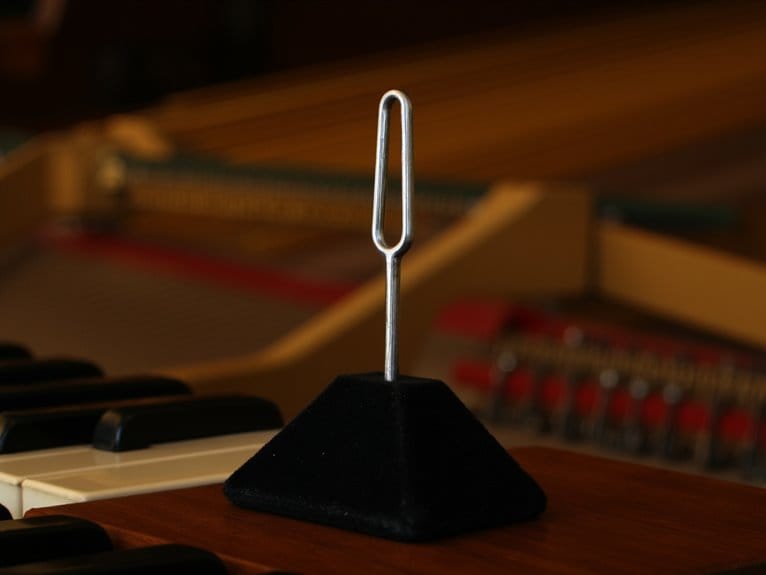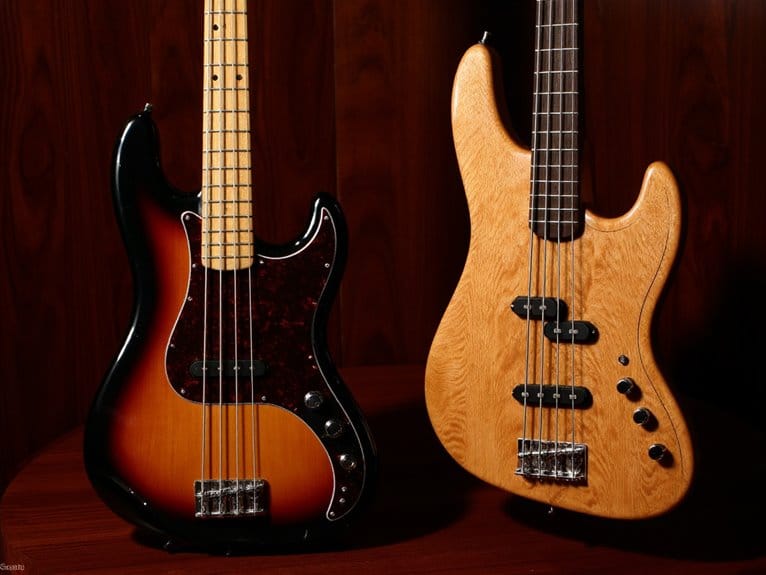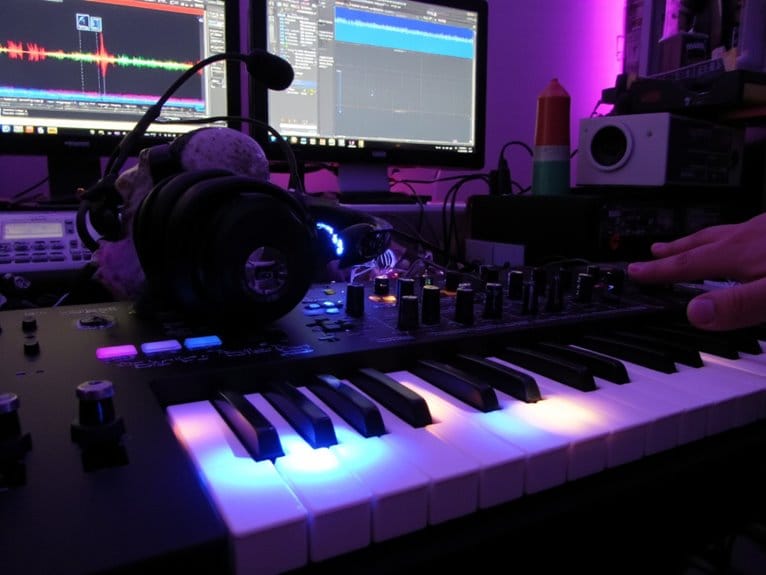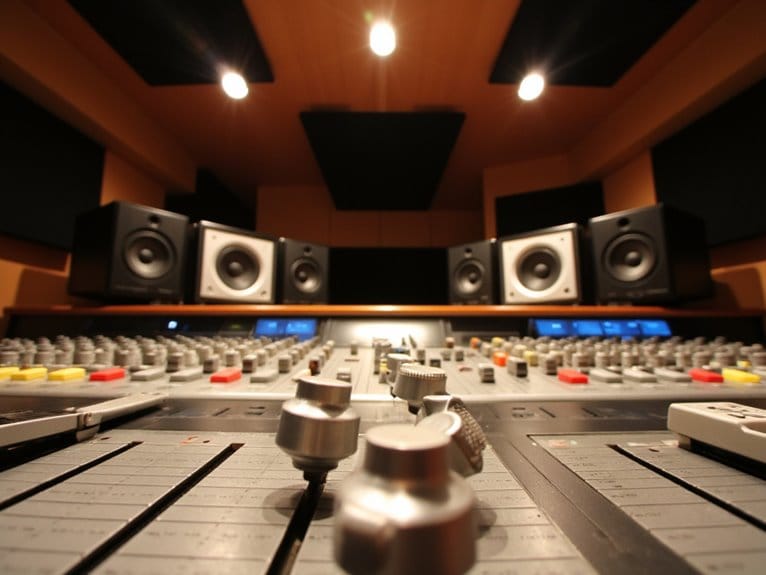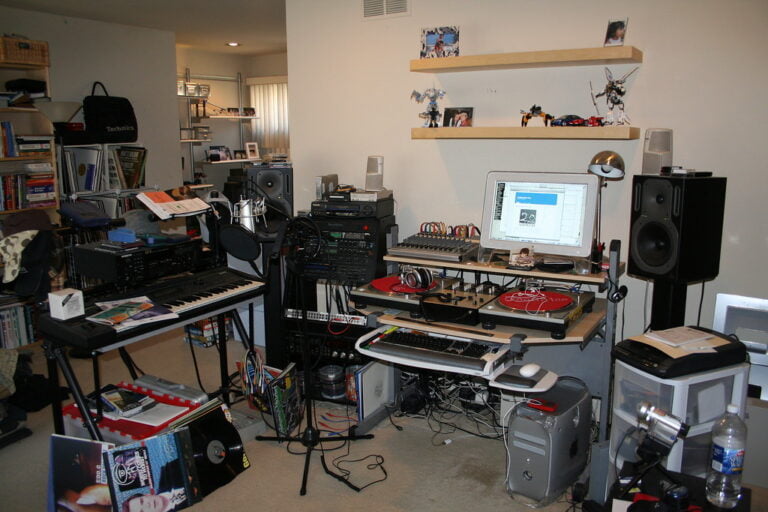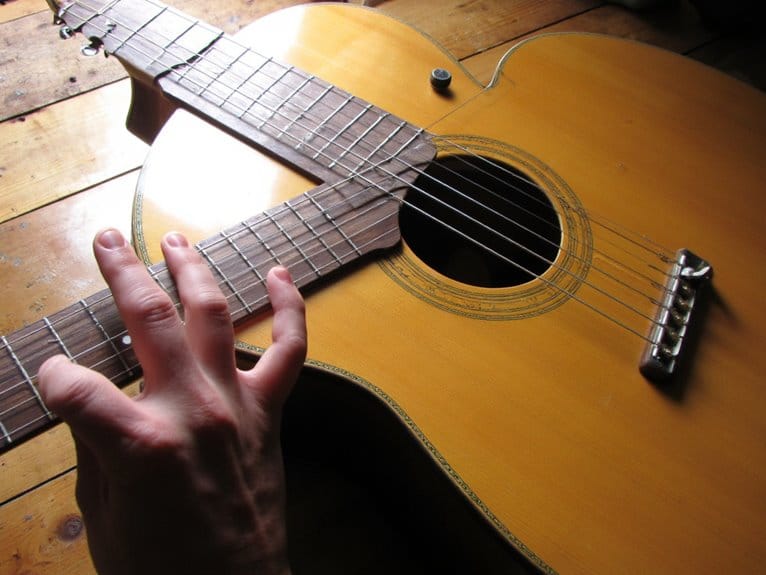The Note A and 440Hz: Tuning Standards Explained
When you tune an instrument to A440, you’re using a frequency standard where the A above middle C vibrates at exactly 440 Hz, established by the International Organization for Standardization in 1955. This wasn’t always the case-historical pitch varied dramatically across regions, with some 18th-century standards differing by several semitones, creating chaos for traveling musicians. Today’s A440 enables seamless global collaboration between orchestras and musicians, though you’ll find some artists still explore alternative tuning systems for unique emotional expressions that challenge conventional musical boundaries.
We are supported by our audience. When you purchase through links on our site, we may earn an affiliate commission, at no extra cost for you. Learn more.
Notable Insights
- A440 standard establishes the note A above middle C at exactly 440 vibrations per second, adopted by ISO in 1955.
- Before standardization, pitch varied dramatically across regions, with some differences spanning several semitones between locations.
- The first major standardization attempt was Diapason Normal in 1859, which set A at 435 Hz before A440 became dominant.
- A440 enables global musical collaboration by providing orchestras and musicians worldwide with a unified tuning reference point.
- Modern tuning relies on electronic devices and tuning forks calibrated to 440 Hz for accurate pitch detection and consistency.
Historical Evolution of Pitch Standardization
When I first started researching musical pitch standards, I was surprised to discover just how chaotic things were before the modern era-imagine trying to organize a multi-city concert tour when every location tuned to completely different pitches.
Early pitch variations weren’t just minor tweaks; we’re talking about massive standard discrepancies that could span several semitones between regions. Archaeological evidence shows 18th-century English pitchpipes at 380 Hz while Bach’s organs hit around 480 Hz-that’s a difference you’d definitely notice.
The 17th and 18th centuries were particularly wild, with European cities maintaining their own local traditions simply because they lacked the technology to calibrate pitch uniformly. Musicians traveling between locations must have experienced constant frustration dealing with these inconsistencies. The first serious attempt at standardization came when the French Government legally established Diapason Normal at A=435 Hz in 1859.
The establishment of our modern A440 standard didn’t occur until the 20th century when the ISO finally adopted it in 1955.
Scientific Foundation and Technical Implementation
While the historical chaos of pitch variations might seem like ancient history, the scientific foundation that emerged to solve these problems represents one of music’s most elegant technical achievements.
When you tune your instrument today, you’re tapping into precise electromagnetic measurements that define A4 as exactly 440 vibrations per second.
The technical implementation relies on several key components:
Modern pitch standardization depends on four essential technological elements working together to create universal musical accuracy.
- Tuning forks calibrated to vibrate at precisely 440 Hz, providing mechanical reference points
- Electronic tuners that measure input frequencies digitally and indicate deviations from concert pitch
- Scientific pitch notation linking note names to exact frequency values for unambiguous communication
- Standardized calibration devices ensuring consistent pitch accuracy across production and performance contexts
This system transforms subjective musical perception into objective, measurable frequencies that musicians worldwide can reliably reproduce. Scientific pitch notation prevents confusion by using traditional tone names A through G with octave numbers that increment systematically from B to C. The standardization also addresses singers’ physical strain that historically resulted from unpredictable pitch variations across different venues and regions.
Cultural Impact on Musical Performance and Collaboration
The transformation from chaotic regional pitch variations to A4 = 440 Hz didn’t just solve technical problems-it fundamentally reshaped how musicians collaborate across cultural boundaries.
When you examine how this standardization unfolded, you’ll notice that cultural biases played a massive role in determining which tuning preferences gained dominance worldwide. The 440 Hz standard didn’t win purely on merit-it succeeded because Western musical institutions wielded significant cultural influence during the 20th century’s globalization surge.
Today, you can witness how this unified reference point enables seamless collaboration between orchestras from Tokyo to Berlin, though it’s worth noting that some traditional musical cultures still maintain their distinct tuning systems, creating fascinating tensions between local authenticity and international compatibility. Just as cultural features are transmitted across generations through learned traditions, musical tuning standards spread through institutional adoption and social learning mechanisms. Modern recording equipment maintains this precision through USB connectivity that ensures consistent signal transmission between instruments and computers. This standardization also revolutionized instrument manufacturing, as companies could now design and produce instruments with confidence that they would meet a universally accepted frequency standard.
Modern Challenges and Alternative Tuning Perspectives
Despite this global standardization‘s success in enabling worldwide musical collaboration, today’s musicians face an entirely different set of tuning challenges that would’ve seemed impossible to imagine during the 440 Hz debates of the early 20th century.
Modern tuning challenges extend far beyond simple frequency agreements.
You’re now dealing with:
- Vocal tuning plugins that struggle with complex sounds like growls and screams, creating audible artifacts
- CPU-intensive processing that introduces latency when handling multiple vocal tracks simultaneously
- Equal temperament’s inherent compromises between harmonic purity and transposition convenience
- Microtonal systems requiring specialized instruments or software for experimental expression
Alternative intonation systems offer fascinating possibilities, dividing octaves into more than twelve intervals for unique emotional responses. These systems can transform vocal qualities in ways that traditional equal temperament cannot achieve, opening new sonic territories for vocal manipulation. Modern musicians must embrace continuous learning to master these complex tuning systems and adapt to rapidly evolving digital tools.
However, these systems demand specialized knowledge and equipment, creating a tension between artistic expression and practical implementation that continues challenging contemporary musicians.
On a final note
You’ve now grasped how A440’s journey from arbitrary choice to global standard fundamentally shaped modern music, though you’ll find passionate debates still rage among musicians who swear by historical temperaments or alternative frequencies. Whether you’re tuning your guitar or programming a digital audio workstation, you’re participating in a centuries-old conversation about pitch, precision, and musical compatibility that continues evolving with technology and artistic expression.

